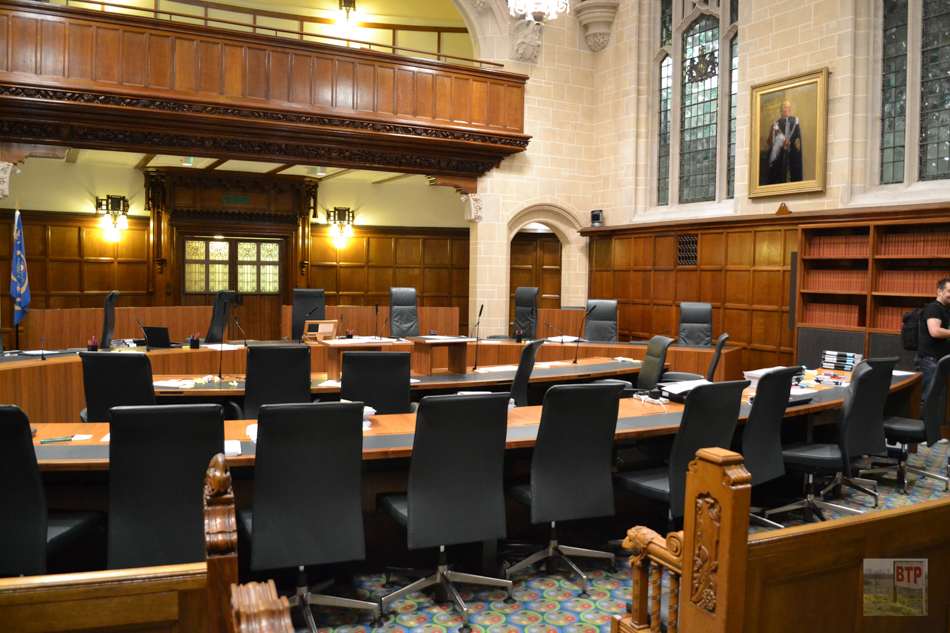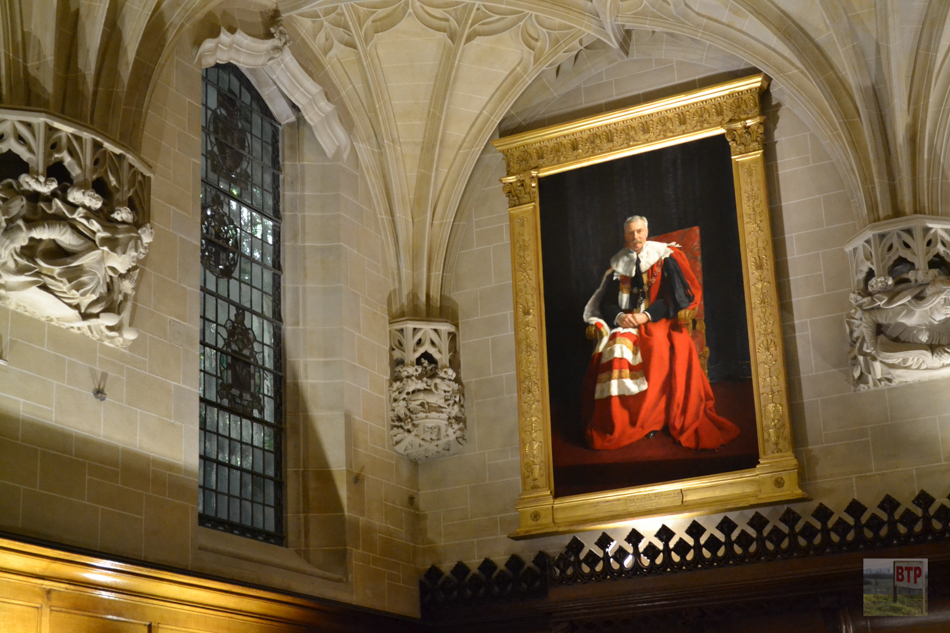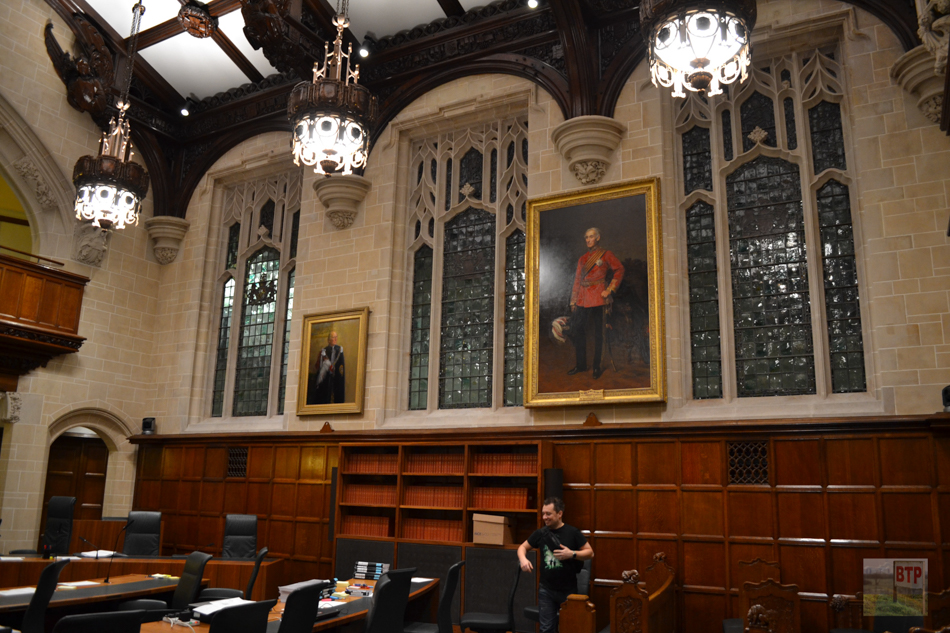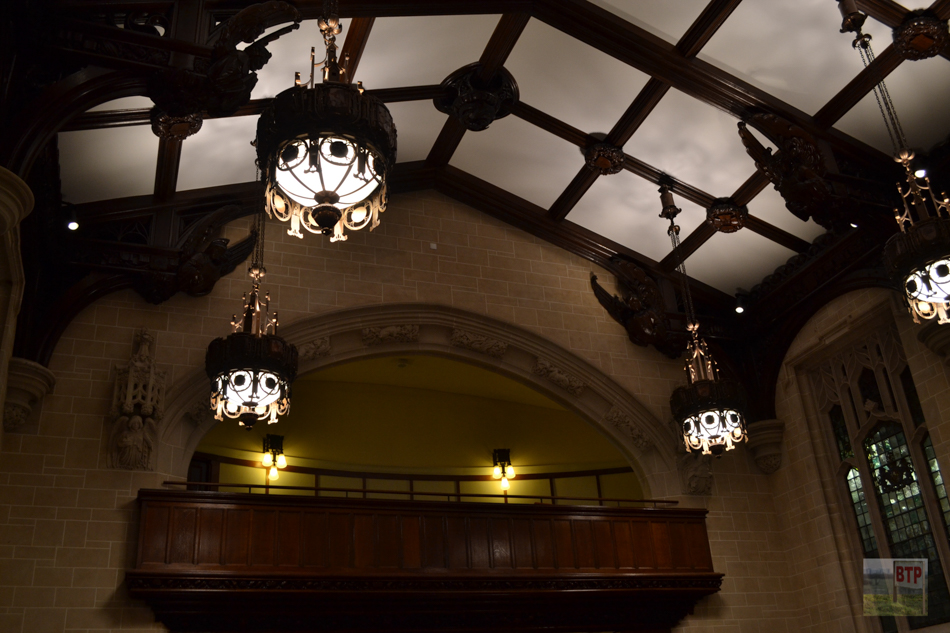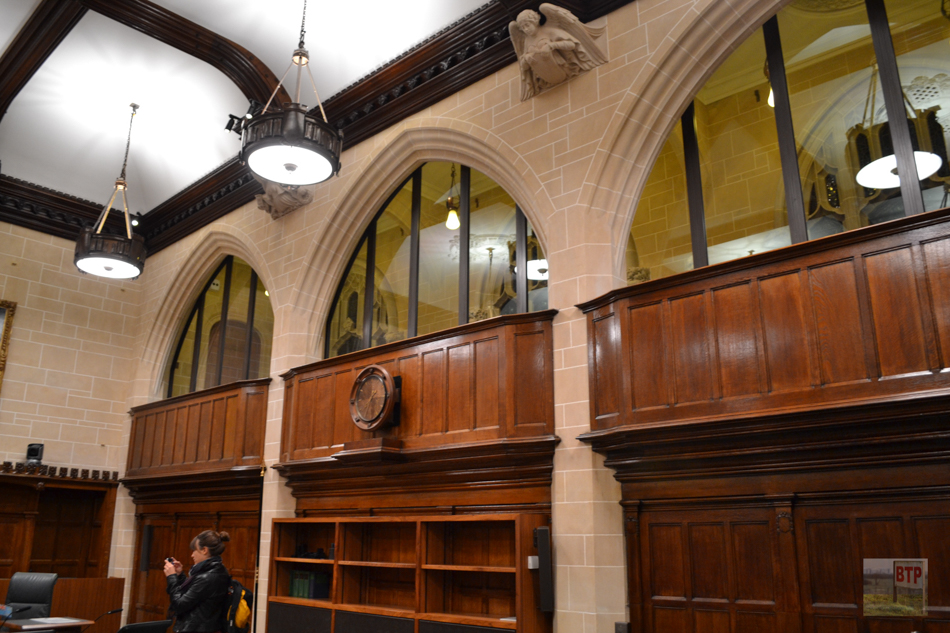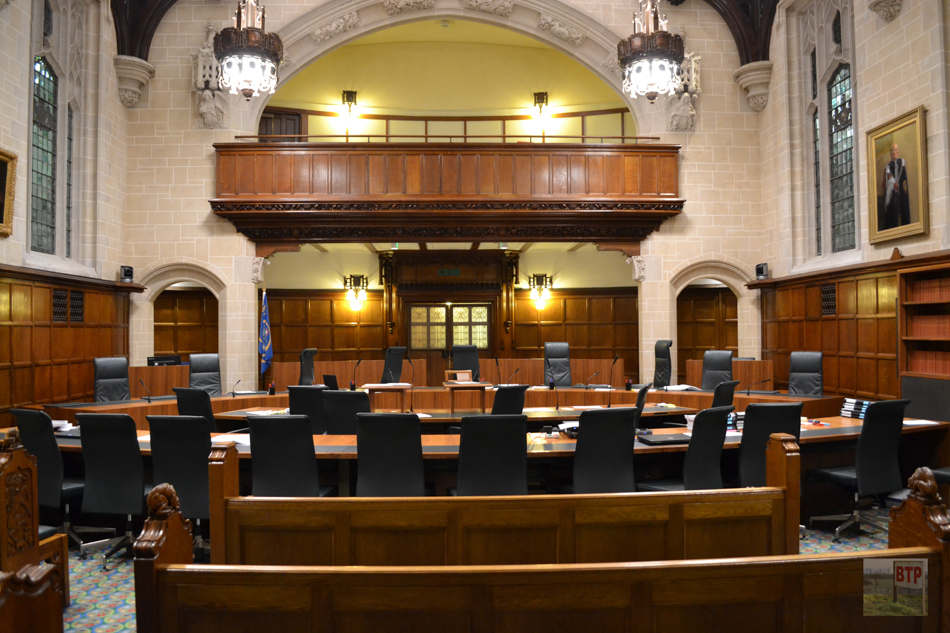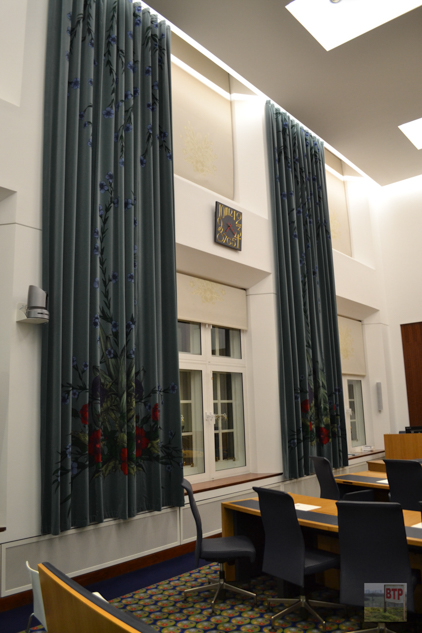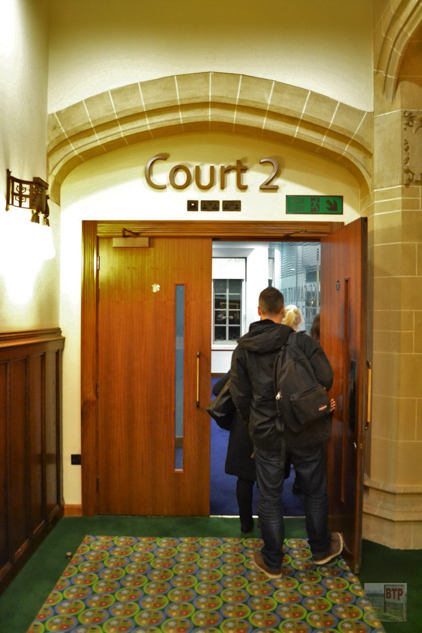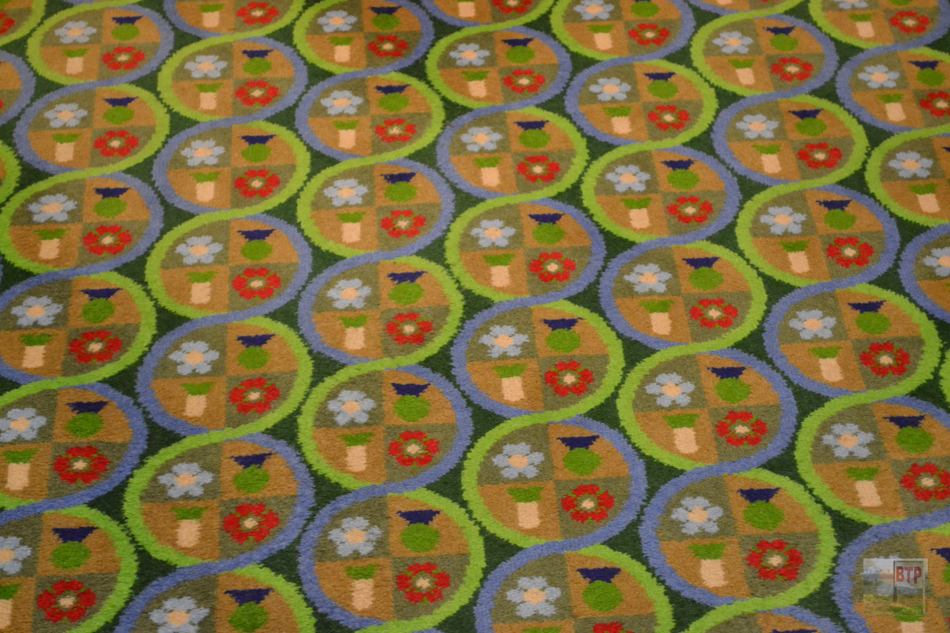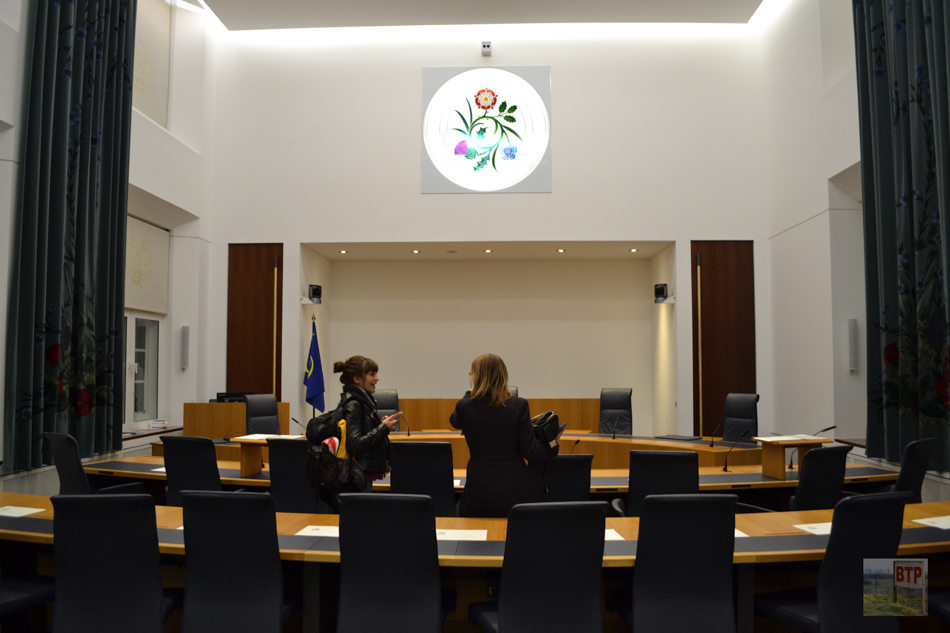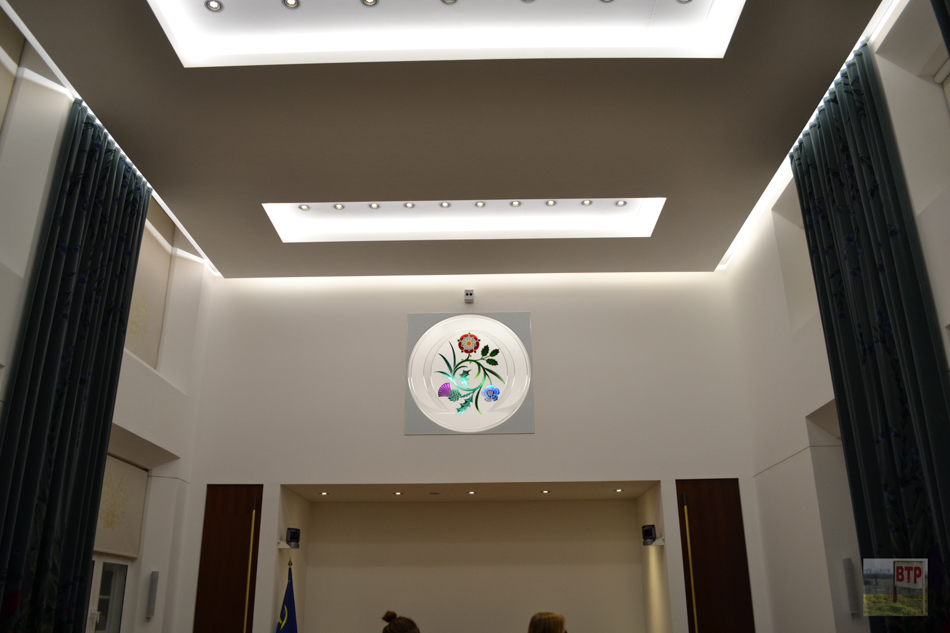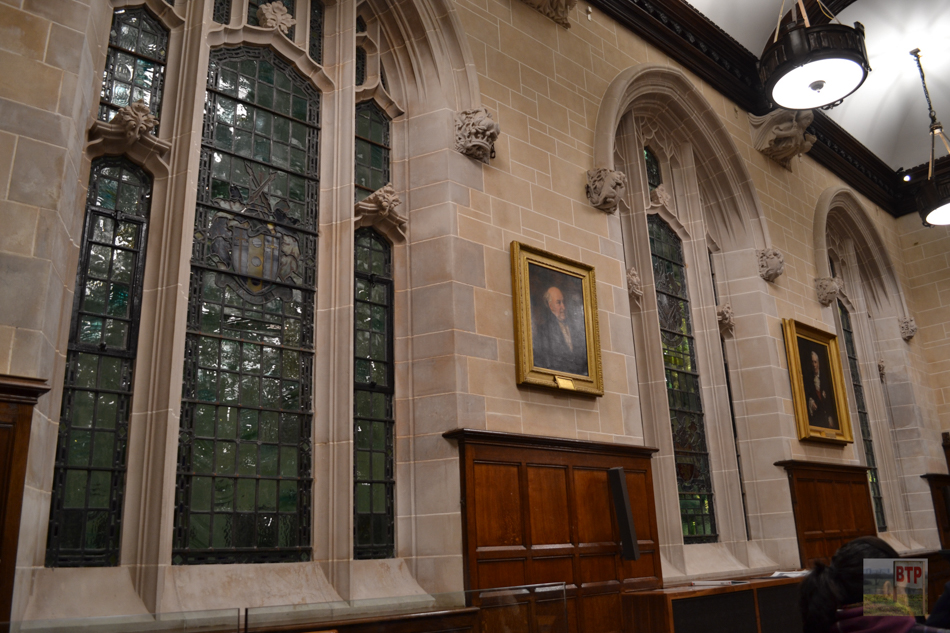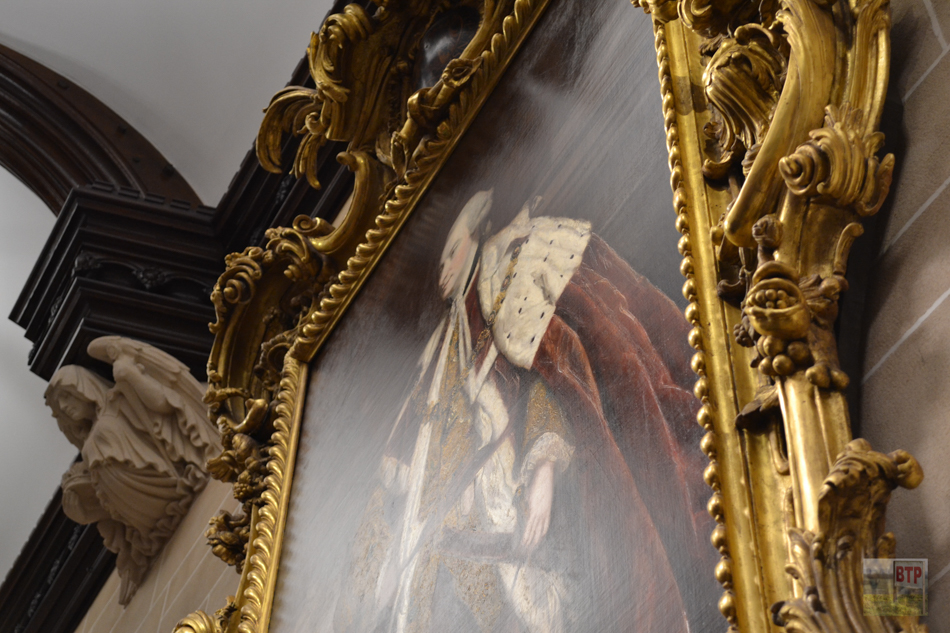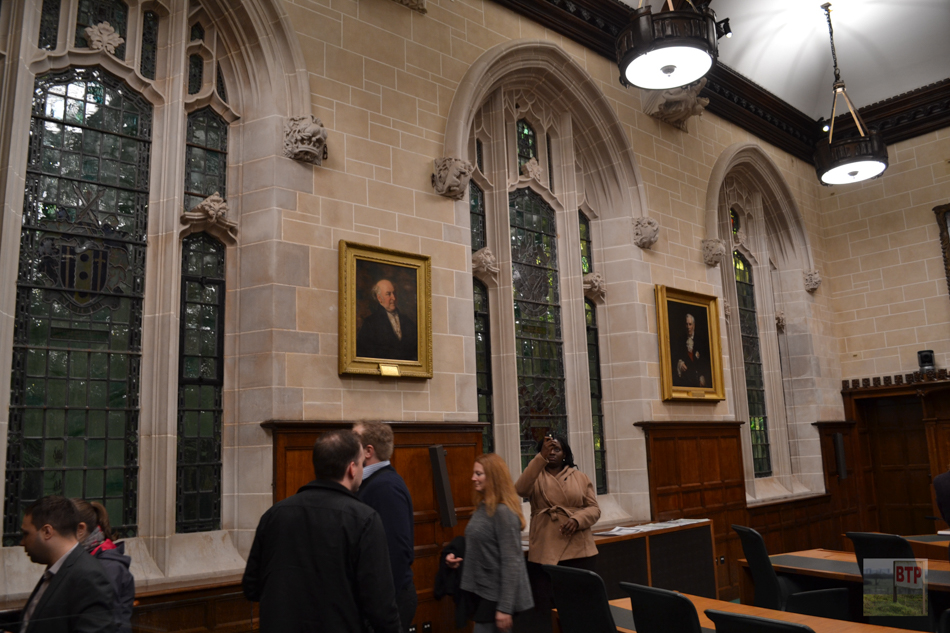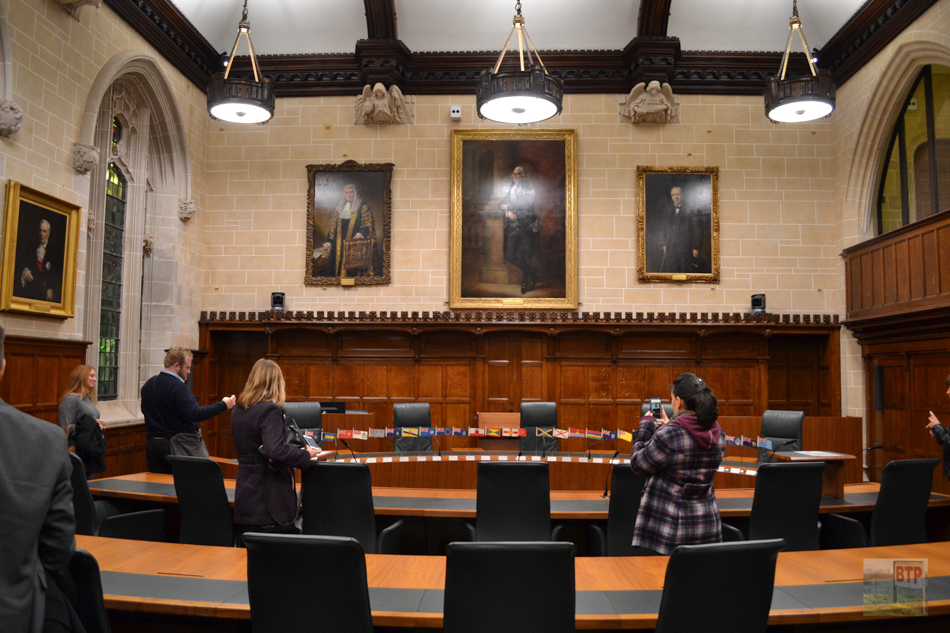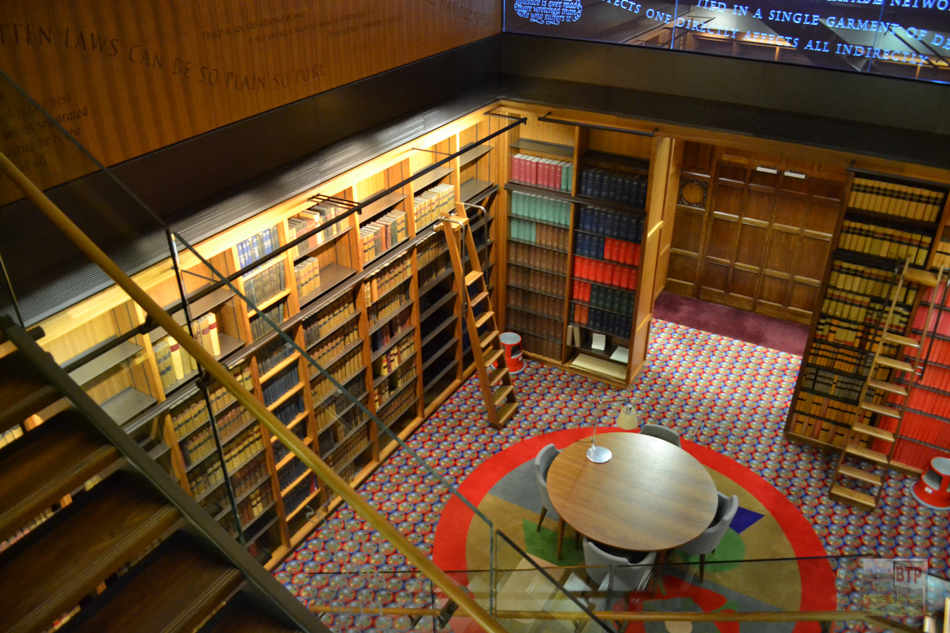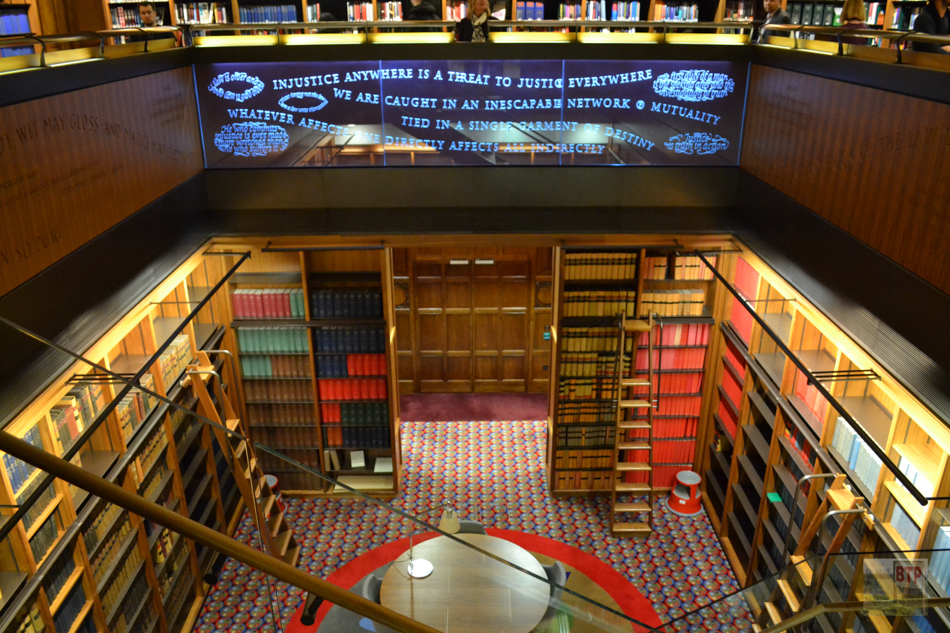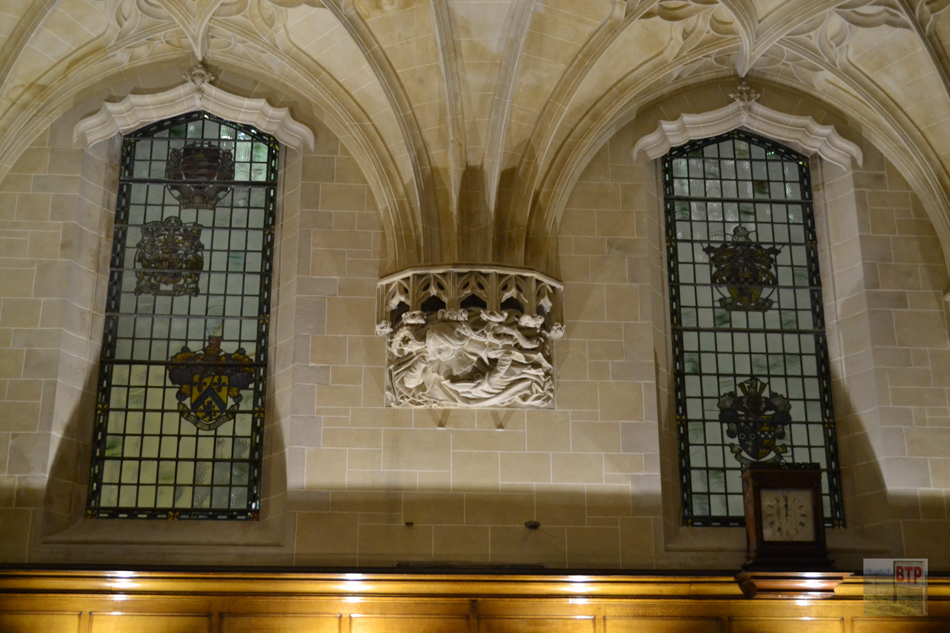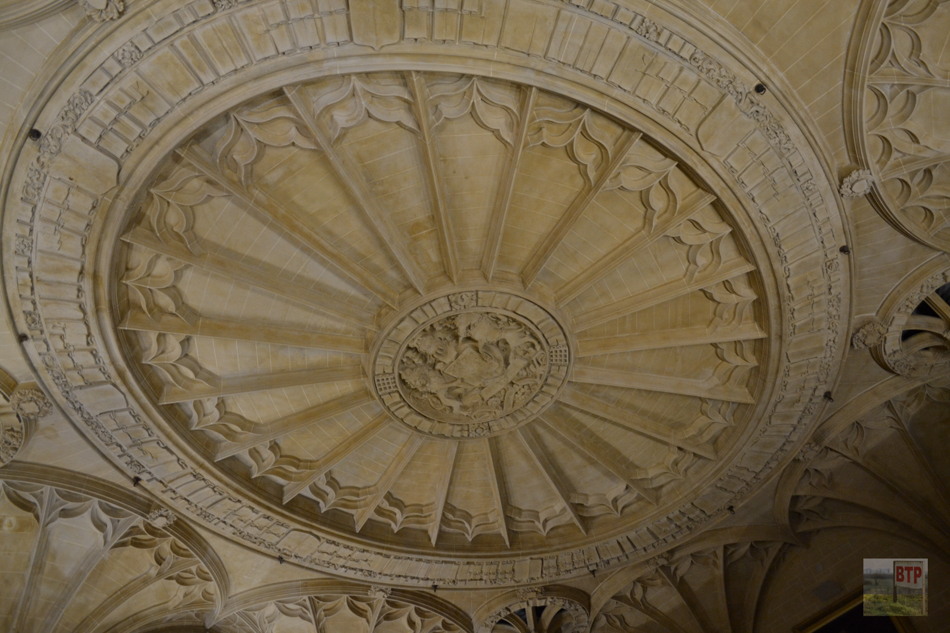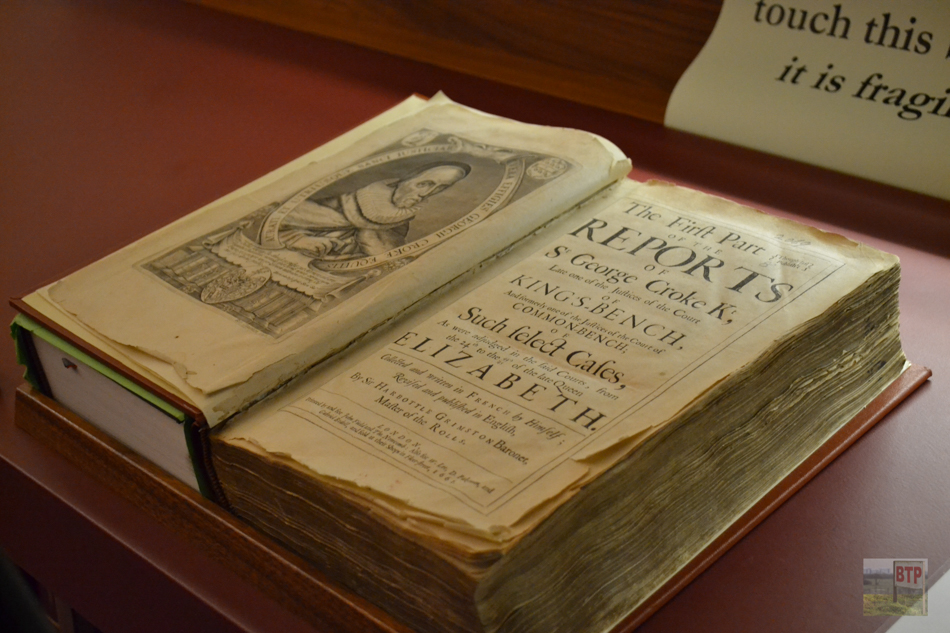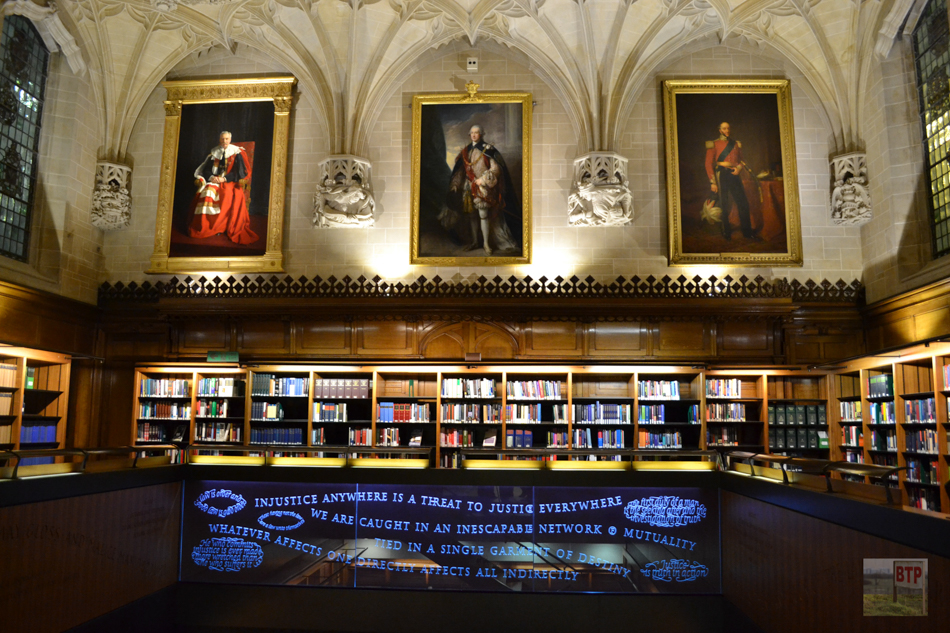Beyond the Point has gone on a special tour of the Supreme Court – the highest court in the UK. The court is based in the hear of Westminster in the former Middlesex Guildhall, an impressive Grade II listed building. The role of the court is to make the final decision on civil cases, deciding on appeals submitted following ruling by lower courts. During our tour we visited all three court rooms and the library which is off-limits to the public.
The court building was completed in 1913 and is the third to be built on that site since 1807. The building was designed by Scottish architect James Gibson. Relatively new to job, he faced the daunting challenge of having to design a unique building to fit in with the surroundings – how can you design something better than Big Ben? He decided to fight fire with fire and built a building which blended it, going for a neo-gothic style. The initial use for the building wasn’t as a court, but as the offices for Middlesex County Council. This was used by the council until 1965 when it later became a court. During the 1980’s the building was reordered, creating seven courts with cells and jury rooms.
Although it was a court, it wasn’t yet the Supreme Court. The Constitutional Reform Act 2005 (which saw the powers taken from Lords and instead passed onto a newly created Supreme Court) gave time for a suitable building to be found and fitted out before the Law Lords moved out of the Houses of Parliament. Various sites were looked at although the Government decided to go for this site in Parliament Square. Renovations took place and the site was converted into three courtrooms.
The Supreme Court doesn’t decide between guilt and innocence, instead the law is discussed. It’s also the only court in the UK where proceedings and recorded and streamed live. There are 11 Lords and 1 Lady – the best judges in the UK.
Court Room 1
Fans of Bridget Jones may recognise this court room from it’s appearance in the latest film. Court number one retains all of the original woodwork since the building opened. Council meetings and discussions would have happened in the room.
Court Room 2
Despite the Grade II listed status, as this room had been modified so much over the years, it was allowed to be completely altered. Two cramped courts were replaced with one bigger modern room. Notice the emblem – the official badge of the Supreme Court, which was granted by the College of Arms in October 2008. It features the four floral emblems of the UK: a Tudor rose, representing England, conjoined with the leaves of a leek (Wales), a flax blossom (Northern Ireland) and a thistle, representing Scotland. The building has a unique especially made carpet which is made up of this design.
Court Room 3
The third and final courtroom.
Library
The library is one of the most spectacular rooms at the court and is off-limits to the public. Hundreds of legal publications line the shelves.

